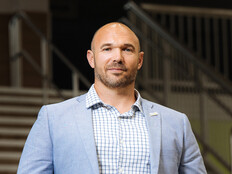CoSN 2017: Times Have Changed for the K–12 CTO
When Lorrie Owens first started working as a chief technology officer, she jokingly referred to herself as “Dr. No.”
Owens, who is now employed as administrator of information technology services for the San Mateo County Office of Education, says she monitored her school district’s network and made sure everything was secure.
“I was the IT person who was trying to lock everything down,” she said.
The scope of work for a CTO has evolved over the last decade; the CTO has become a leader who bridges the gap between business operations and education, Owens said.
Owens joined Julie Judd, CTO of Ventura Unified School District, and Andrea Bennett, executive director of the California Educational Technology Professionals Association, for a Wednesday CoSN conference session to discuss “The Emerging Role of the CTO.”
The K–12 CTO Is a New Type of Leader
The CTO, like many K–12 technology leaders, used to be tasked with ensuring that all district software was kept humming. Now, he or she is in charge of making sure all of a district’s infrastructure and classroom technology, which may be online, is running smoothly.
A CTO is tasked with making connections between departments, supporting the vision of the superintendent and district, building capacity, providing technology solutions and understanding the department’s role in educating children, Bennett said.
“That kind of planning and vision takes more of a leader than a technician,” she said.
Tech Has a Role to Play in Teaching
Teachers aren’t the only staff in school to educate students. The technology department has to play a role, too, Bennett said.
“Sometimes the department feels separate from the rest of the district, but it’s important for the IT lead to get them to understand the role of educating the students,” she said. “It takes a team.”
Judd, who rose through the ranks after several years as a band director, agreed.
“It makes your work way more rewarding and satisfying when you feel like you’re a part of the organization,” she said.
Developing Collaborative Relationships Between Stakeholders
Judd says, as CTO, she reports to both the business operations and education side, and she likes having a seat at both tables.
“I’m the conduit between the two,” Judd said. “I’m the voice at the table that’s bringing in the piece that maybe they never would have thought about otherwise.”
There’s a big advantage for a CTO to have a close working relationship with and report directly to the superintendent, Owens said.
“In many cases I was able to hear what the plans were as the plans were being formed,” she said. “It was my role to say this is what it’s going to take tactically to make the vision happen. Otherwise, it’s very difficult to be the person charged with making it happen after the decisions are made. Ideally, you have a tech department that is part of the cabinet and part of the visioning process,” says Owens.
EdTech is covering CoSN 2017, including articles on spotlight sessions, keynotes and the pulse on social media. Keep up to date on all of our coverage by visiting our CoSN 2017 conference page.









